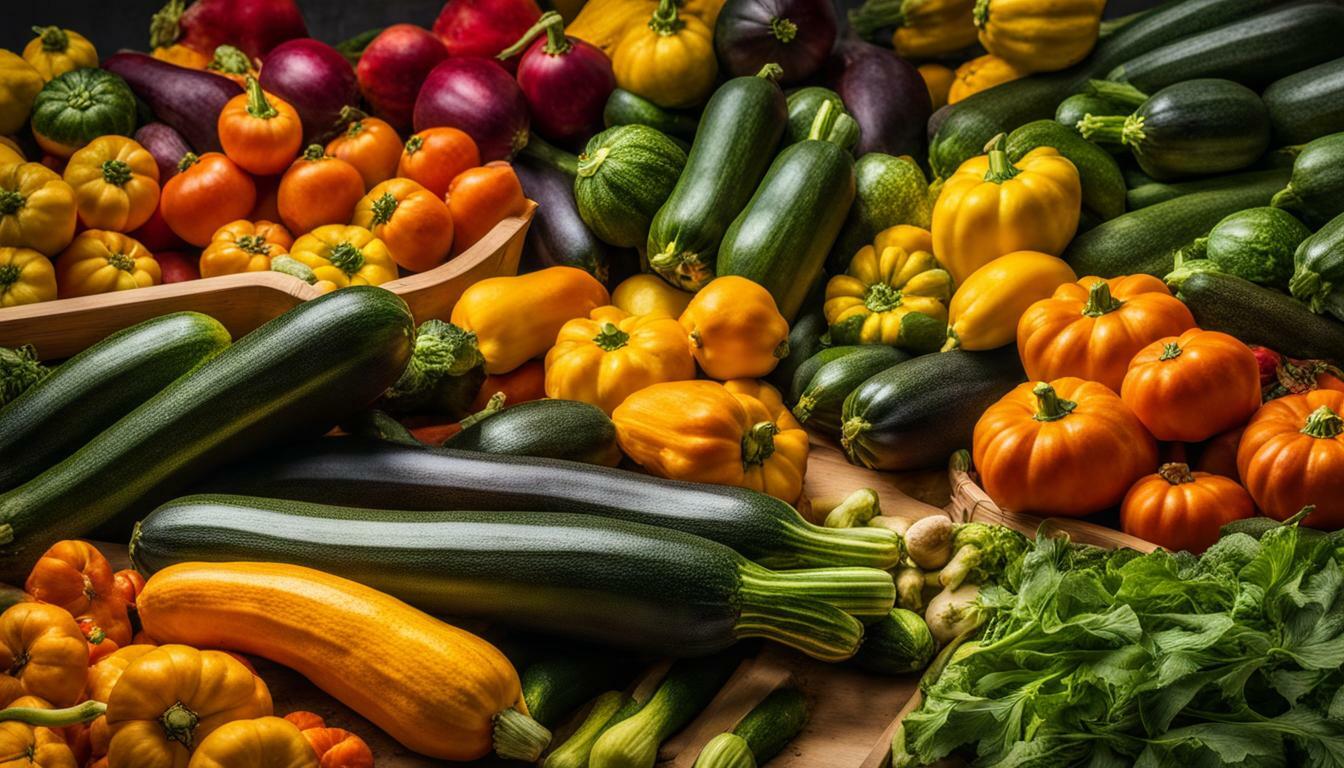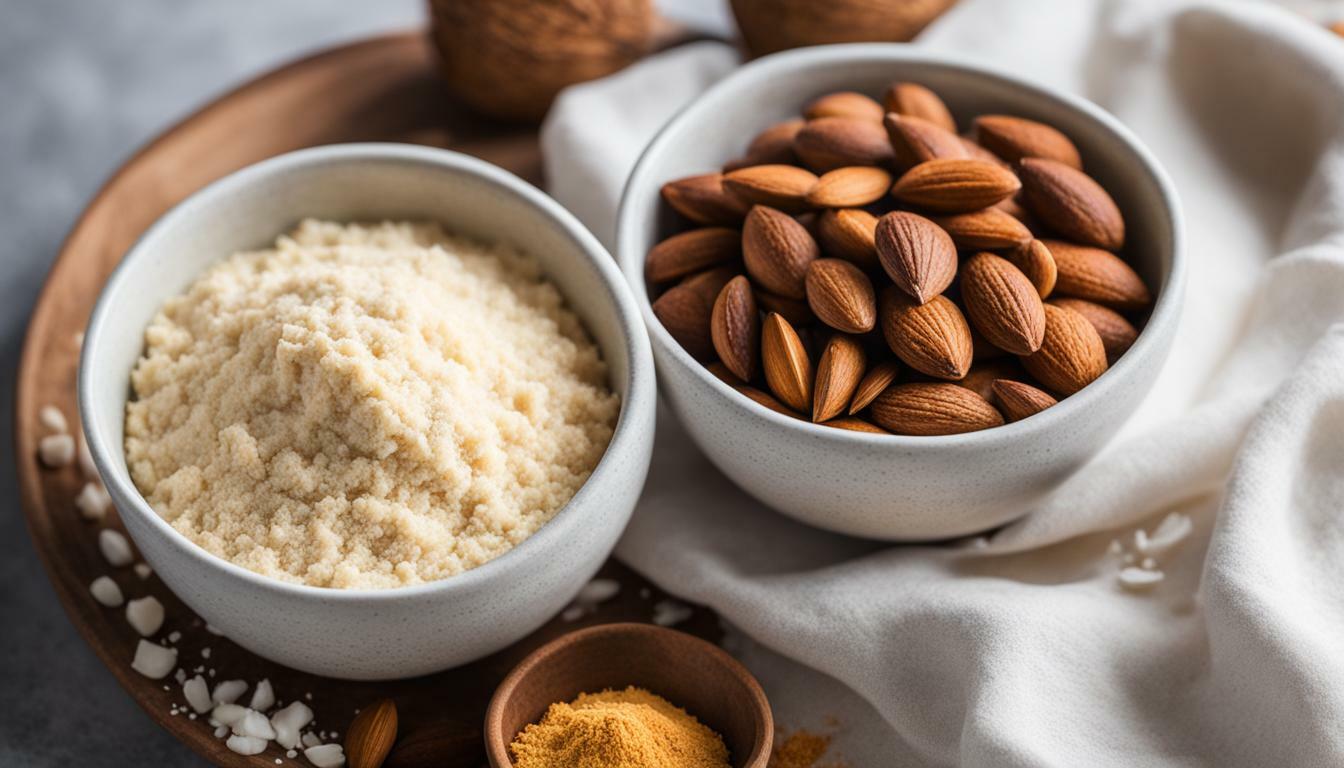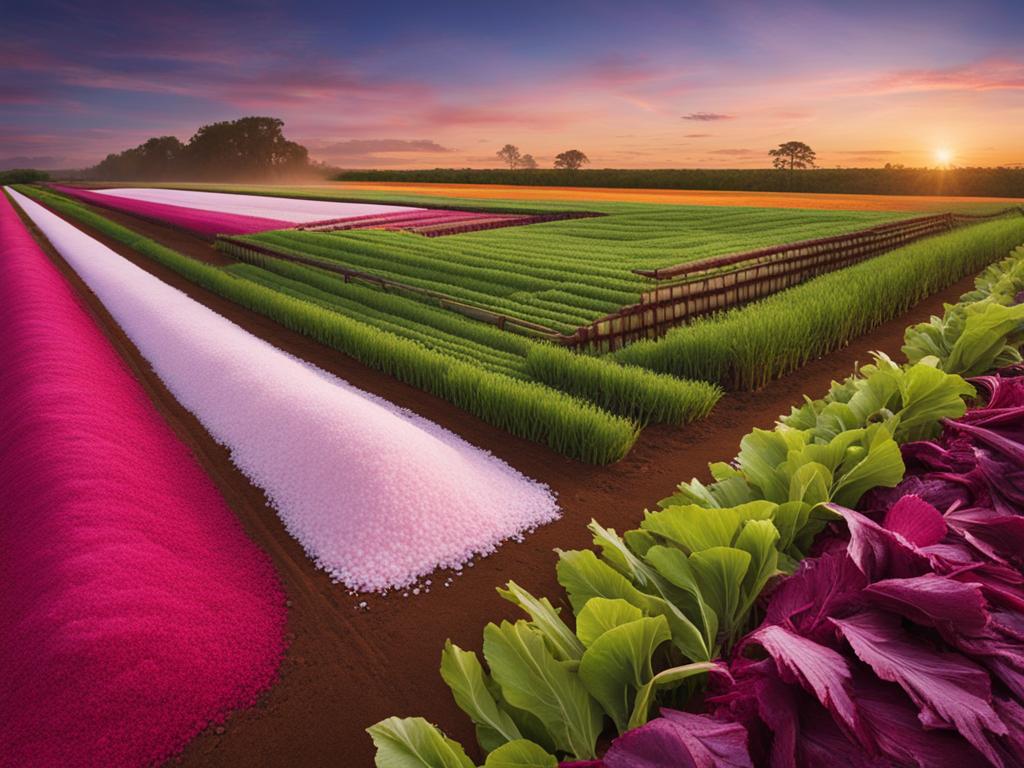Zucchini and squash are two popular vegetables that are often used interchangeably in recipes. However, many people are still confused about their differences and similarities. In this section, we will explore the key characteristics that differentiate zucchini from squash. By the end of this section, you’ll have a better understanding of these two vegetables and how to use them in your cooking.
Key Takeaways
- Zucchini and squash are both members of the same family of vegetables.
- The main difference between zucchini and squash is their shape and color.
- Zucchini has a mild and slightly sweet flavor, while squash can be sweet or nutty.
- Zucchini is often used in Italian cuisine, while squash is a staple in Mexican and South American cooking.
Types of Zucchini and Squash
Zucchini and squash come in a plethora of types, ranging in size, color, shape, and taste. In this section, we’ll explore the many varieties of zucchini and squash, including the popular zucchini and yellow squash.
Summer Squash
Summer squash is a type of squash that is harvested when immature and has a soft outer skin. Varieties of summer squash include zucchini, yellow squash, crookneck squash, and pattypan squash. These types of squash have a mild flavor and are delicious in dishes like zucchini bread, roasted vegetables, and stir-fries.
Winter Squash
Winter squash is harvested when fully mature and has a hard outer skin. Varieties of winter squash include butternut squash, acorn squash, delicata squash, and spaghetti squash. These types of squash have a slightly sweet flavor and are perfect for roasting, baking, or stuffing.
Zucchini
Zucchini is a type of summer squash that has a cylindrical shape and smooth, dark green skin. It has a mild, slightly sweet flavor and a tender texture. Zucchini is a versatile vegetable that can be grilled, sautéed, roasted, or spiralized for use in salads or as a low-carb pasta alternative.
Yellow Squash
Yellow squash, also known as summer squash, is a type of squash with a yellow, elongated shape and a slightly curved neck. It has a mild, buttery flavor and a tender texture. Yellow squash is great for grilling, sautéing, or using in soups and stews.
Whether you prefer the mild flavor of summer squash or the sweet taste of winter squash, there’s a type of zucchini or squash to suit every palate. Experiment with different varieties to find your favorite and add some variety to your meals!
Distinguishing Features of Zucchini and Squash
Zucchini and squash are both members of the gourd family and share many similarities. However, there are several distinguishing features that set them apart.
Zucchini Varieties
Zucchini can be found in various colors, including green, yellow, and even striped. Green zucchini is the most common variety and is easily recognizable by its cylindrical shape and smooth, dark green skin. Yellow zucchini is slightly sweeter and has a more delicate flavor than its green counterpart. It also has a softer texture and can be used in both sweet and savory dishes.
Another popular variety of zucchini is the round or “ball” zucchini. As the name suggests, this type of zucchini is round in shape, making it ideal for stuffing and baking. It has a slightly nutty flavor and a firm texture that holds up well when cooked.
Squash Varieties
Squash comes in a wide range of shapes, sizes, and colors. Summer squash, like zucchini, has a soft edible skin and a delicate flavor. The most common types of summer squash are yellow squash, pattypan squash, and crookneck squash. Yellow squash, as the name suggests, has a yellow skin and a mild, slightly sweet flavor. Pattypan squash is small and round with a scalloped edge and a bright yellow or green skin. Crookneck squash has an elongated neck that curves at the end and a bright yellow skin.
Winter squash, on the other hand, has a hard, inedible skin and a sweet, nutty flavor. The most well-known types of winter squash include butternut squash, acorn squash, and spaghetti squash. Butternut squash has a smooth, tan skin and a bulbous end that tapers into a narrow neck. Its bright orange flesh is sweet and slightly nutty. Acorn squash is dark green with a ridged exterior and a yellow-orange interior. It has a slightly sweet flavor and a slightly fibrous texture. Spaghetti squash has a yellow, oblong shape and its stringy flesh resembles spaghetti when cooked.
By understanding the differences in zucchini and squash varieties, you can select the best type for your recipe and make the most out of these versatile vegetables.
Culinary Applications
Now that we understand the differences between zucchini and squash, let’s explore their culinary uses.
Zucchini and squash are incredibly versatile vegetables that can be used in a variety of dishes. They both have a mild, slightly sweet flavor and tender flesh, making them ideal for incorporating into salads, soups, stews, and stir-fries.
One of the simplest and most delicious ways to prepare zucchini or squash is to sauté them in a little bit of olive oil with garlic and onions. You can also grill them on a barbecue or roast them in the oven for a caramelized flavor. Zucchini and squash are also great for making fritters, gratins, and casseroles.
Another fun way to use zucchini and squash is to spiralize them into noodles. This is a popular low-carb and gluten-free alternative to traditional pasta, and it’s easy to do with a spiralizer or vegetable peeler.
When it comes to zucchini vs squash, each has its own unique characteristics that lend themselves to specific dishes. For example, zucchini’s delicate flavor and texture make it great for raw preparations like salads and crudité platters. On the other hand, winter squash like butternut or acorn squash have a denser texture and richer flavor that make them ideal for roasting or puréeing into soups.
Ultimately, the possibilities are endless when it comes to cooking with zucchini and squash. Experiment with different recipes and techniques to discover your favorite ways to enjoy these delicious vegetables!
Conclusion
In conclusion, zucchini and squash may seem similar at first glance, but there are significant differences between these two vegetables. Zucchini is a type of summer squash and has a smooth, green skin with a mild flavor. On the other hand, squash refers to a broader family of vegetables that includes winter squash with a tough skin and sweet, nutty flavor.
By understanding the differences in appearance, taste, and texture, you can confidently identify zucchini and squash and choose the right variety for your recipes. Whether you’re looking to make a refreshing salad or a comforting soup, zucchini and squash are excellent choices to add flavor and nutrition to your meals.
So, next time you visit your local farmer’s market or grocery store, keep an eye out for these versatile vegetables and experiment with new recipes. With their unique qualities and culinary uses, zucchini and squash are sure to elevate your dishes and impress your taste buds!
FAQ
Q: What is the difference between zucchini and squash?
A: Zucchini is actually a type of squash. The main difference between zucchini and other types of squash is their shape and color. Zucchini is usually green and has a straight shape, while other squash varieties can be yellow, round, or have bumpy skin.
Q: Can you use zucchini and squash interchangeably in recipes?
A: Yes, you can often use zucchini and other types of squash interchangeably in recipes. They have a similar taste and texture, so you can substitute one for the other in most dishes. Just keep in mind that different varieties of squash might have slightly different cooking times and flavors.
Q: Are zucchini and yellow squash the same thing?
A: No, zucchini and yellow squash are not the same thing, but they are both types of summer squash. Yellow squash, as the name suggests, has a yellow color and a slightly sweeter taste compared to zucchini. However, they can be used interchangeably in many recipes.
Q: Are zucchini and squash nutritionally similar?
A: Yes, zucchini and other types of squash are generally similar in terms of nutritional content. They are low in calories and high in fiber, vitamins, and minerals. Both zucchini and squash can be a healthy addition to your diet.
Q: How can I incorporate zucchini and squash into my meals?
A: There are many ways to incorporate zucchini and squash into your meals. You can sauté them, grill them, bake them, or even spiralize them to create zucchini noodles. They can be used in stir-fries, salads, pasta dishes, casseroles, and more. Get creative and experiment with different recipes!
 Skip to main content
Skip to main content


